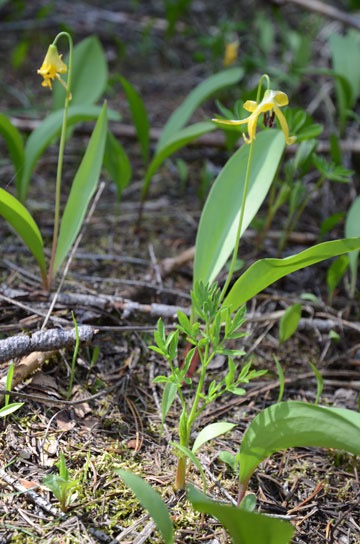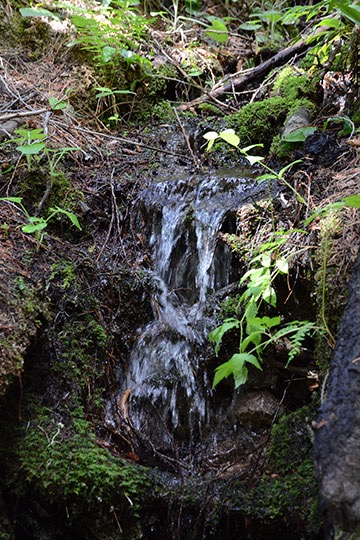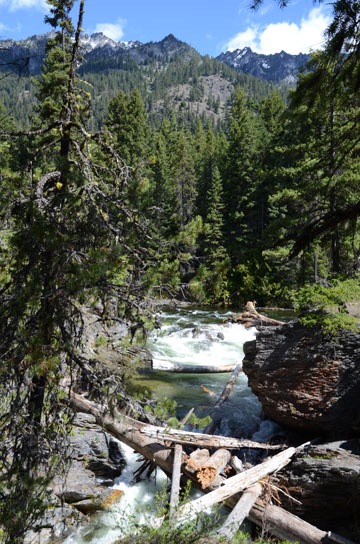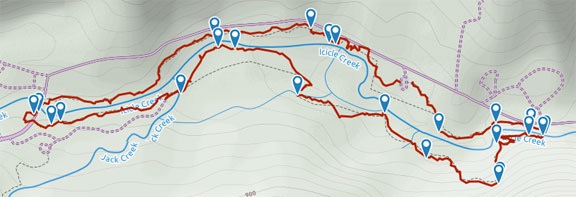Or 28 hours off-the-grid.
I brought the Turtleback home on Wednesday and left it on my truck on purpose. I wanted to take it out for a short trip before I put it away.
I wanted to test it out in real off-the-grid conditions. I wanted to see how comfortable it was, how well I slept in it, how hot the water got, how loud the heater was. I wanted to cook a meal in it, wash dishes in its kitchen sink, and use the toilet in the middle of the night. I wanted to take it on a narrow gravel road and squeeze into a parking space I couldn’t dream of fitting into with its predecessor.
I’d do it locally — or relatively so. There’s a campground called Rock Island about 17 miles up Icicle Creek near Leavenworth Washington. The total driving distance is about 75 miles. One of my favorite trails, the Icicle Gorge Loop Trail, runs right past it. I thought I’d get a campsite, set up camp, and do the loop trail.
The campground page on the USFS website said Rock Island Campground got “heavy use.” I hate crowds so I didn’t want to do the trip on a weekend. I figured I’d do it on a “weekstart.” (If Friday through Sunday is the weekend, then Sunday through Tuesday should be the weekstart, no?) The way I saw it, most people left the campground on Sunday; I’d pull in on Sunday evening, get a good site, and avoid the crowds.
Heading Out
Of course, things don’t always turn out the way you want them to. I lost about two hours of my Sunday to a bee swarm call that was a total bust. (Don’t ask.) Then I spend another 30 minutes looking at new grills. By the time I got back home to pack, it was well after 4 PM. There was no way I’d have time to shower, pack, and head out before the friendly propane suppliers closed. I’d leave the first thing in the morning instead.
I was ready to go by 7:30 AM with the refrigerator packed, clothes and dog supplies loaded, and water tank topped off. I got a mile from my home before I remembered that I needed to harvest some broccoli that would flower if I didn’t and that I’d forgotten my Nikon. Twenty minutes later, I was headed out again.
I stopped at Ag Supply on North Wenatchee Avenue for propane. I asked for a “strong guy” to help me. Lots of places won’t load full propane bottles back into your truck. They’re not required to. But friendly places do. And the main drawback to the Turtleback is that the two 7-gallon propane tanks are in a cabinet about level with my head. Getting them down when they’re empty will be easy. Getting them back up there, not so much. And I had no idea how much propane was in them. I didn’t want to run out on my maiden voyage.
The kid who helped me used my stepladder to get them down and put them back. They were each about 1/2 full. I like to run one tank empty before switching to the other and refilling the empty so I always know I’ve got a full tank. These tanks have fancy gauges that I didn’t think worked. They do. They just read a little low.
The next stop was in Leavenworth: Safeway. I needed a gallon bottle of water — I don’t drink what comes out of an RV’s tank. (Ick.) And some orange juice. And an almond croissant. And a veggie platter to snack on. And bacon (which I forgot).
Once the groceries were loaded, Penny and I continued on our way with me munching a croissant. And then a donut. We drove through town and turned left onto Icicle Road. Soon we were winding up the canyon beside Icicle Creek, which was rushing madly with spring snow melt. Few cars were on the road — it wasn’t even 10 AM on that Monday morning. Pavement turned to gravel and we kept going, passing one campground after another. It was when we got to Chatter Creek Campground’s turn that I saw a pickup truck at the campground entrance. A woman was out of the truck moving a ribbon that stretched across the entrance drive. I stopped my rig and called out to her: “Is the campground closed?”
She came over and we chatted. All the Campgrounds past Johnny Creek were closed. Some biologists were checking out trees. Bark beetle was an issue. Was Rock Island closed? Yes. I pointed out that the website didn’t say the campground was closed. She had nothing to say about that. I asked her if the ranger station up the road had more information and she told me that was closed, too. But there’s some distributed camping, she said in a sort of wink-wink-nod-nod-say-no-more kind of way.
“Yeah, I’ll just find one of those sites,” I said. “This is set up for off-the-grid camping.” I thanked her and shifted into gear.
She took a step back and said, “Nice rig.”
I laughed and thanked her.
I kept driving. I took it slow. The truck handles a bit differently with the Turtleback on it. Higher center of gravity, exaggerated bumps, lots of squeaking. One of the things I’ve learned over the past few years is patience. I’m seldom in a hurry to do anything. I think it’s got to do with my relaxed lifestyle. So when I want to drive slowly, I can.
I passed one of the Icicle Gorge Loop Trail trailheads and kept going. Then I reached Rock Island Campground. It had the same red ribbons tied across its access roads with signs that said, “Closed to Public Use.” I kept going.
I stopped for a while in a parking area where I’d gone mushrooming with a friend the previous fall. Penny and I got out for a short walk in the woods. It was wet — I think it had rained that morning — and there was some flooding down on the trail. We didn’t stay long. We didn’t see any mushrooms either. Seriously: what was I thinking? It was way too early in the season for chanterelles.
We continued down the gravel road. The only thing left was a horse loading area, a horse campground, and the Icicle Creek Trail Trailhead at the very end of the road. The horse campground was closed (of course) and a pretty good water flow crossed the road just past it. Although the ford had a concrete bottom, I didn’t see any reason to drive through. I couldn’t camp at the trailhead. So I turned around and started looking at some of the side roads I’d passed.
One of them about halfway back to Rock Island Campground looked pretty good — but narrow. I parked the truck on the side of the road and got out with Penny to scout it out. I’d lost my cell signal before the pavement ended and the last thing I wanted was to get stuck on some dirt road in the middle of nowhere. Better to look on foot than explore with the truck and Turtleback.
The road was narrow with scattered potholes, many of which were deep and full of running water. Branches came low over the road. The Turtleback is at least 12 feet tall and more than 8 feet wide — it would be pushing these branches aside as I drove. But there didn’t seem to be anyplace to drive to. One by one, we passed right turns that we either short or extremely narrow paths unsuitable for my rig. We kept walking. We’d gone about 1/3 mile when I saw it: the most amazing campsite I’d ever seen. Nearly level with a mix of sun and shade, a fire pit, logs to sit on, and Icicle Creek rushing past.
Not the best video in the world, but it gives you an idea of what the road was like. If you can, watch it fullscreen.
We went back to the truck and climbed on board. I used my phone to video our 4-minute drive back to the site. You can hear the truck and camper pushing through the branches. It sounds like I’m beating the crap out of my rig, but there wasn’t any damage.
I backed into the campsite and killed the engine. Icicle Creek was about 50 feet from the camper door. I could hear the water rushing — it was about the only thing I could hear. It sounded wonderful.

Here’s a panoramic view of the campsite with the Turtleback parked in it.
And, of course, we were the only ones around — possibly for miles.
Setting Up Camp
There wasn’t much to setting up camp. That’s the beauty of traveling with an RV. You park it, open a slide (if you have one), and you’re good to go.
In my case, there was a bit more work. Although I’d brought linens with me, I hadn’t made the bed. So I did that. I also stowed the few items of clothing I’d brought. And the medicine cabinet items I planned to leave in there.
I’d also brought along some MatchLight charcoal, scrap lumber, and newspaper, all in a box. I put those outside beside the fire pit, along with a new grill I’d bought for cooking over the fire. I wasn’t going to “cook” — I had some smoked ribs that needed sauce and grilling to finish up before they were ready to eat. I was going to reheat them there. The only other alternative for reheating them was the convection microwave and I had no desire to run the generator.

Penny on guard duty.
I should mention that while I was doing all this, Penny was sitting outside the camper door on high alert, shivering a bit in the cool air, watching the forest around us. She’s pretty funny sometimes. She’s incredibly brave for a small dog, always running far ahead on hikes and challenging other dogs that give her the weird eye. But there in the forest, in a place completely unfamiliar to her, she stuck close to home. I suspect it was because she couldn’t hear much above the sound of the rushing creek and she was likely smelling all kinds of wildlife that could include something as exotic as bears.
As I was finishing up, I started thinking about all the things I needed to set up a good camp. Some of the things were things I already had and could leave in the camper but had neglected to pack them: folding chairs, lantern, BBQ tongs, Dutch oven, steamer basket. Other things would have to be bought or otherwise acquired: battery monitor, stiff broom, outside door mat. Of course, I didn’t have a pen and paper to write these things down. So I fetched a pen from the truck and made lists on the back of the cardboard insert that had come with the BBQ grill. I added notebook w/pen to the bottom of the list. Duh.
I’d periodically add items to this list over the next 24 hours. And two more lists: things to fix/add (outdoor shower, DC outlet near stereo) and things to modify (bedroom closet, key hooks, mattress top).
The Hike
Penny and I went for a hike right from the campsite. There were narrow trails leading up and down Icicle Creek. I picked the one heading up and we started out.

Spring runoff had streams running all over the place.
We didn’t get far before our path was blocked by a rushing stream. I didn’t want to get my feet wet and there didn’t seem to be a way to cross. But Penny was already finding another trail. I followed her up the little creek into the woods. After a while, the path turned back toward the creek and another chance at crossing. It was wider there, with strategically placed logs that looked crossable. But there was a lot of water flowing and falling in would not be good for either one of us.

Penny and I crossed the stream on this log. Her way was blocked by the log and branch lying across the larger log.
Still, before I could make a decision, Penny had already started across, jumping from one stone or patch of earth to another and pausing on a center island. I knew I could get at least that far so I followed. Before I could stop her, she began trotting down the log that went to the other side. Trouble was, there were other logs on top of that log and her way was blocked. So she tried to find another way. Worried that she’d misstep and fall into the rushing water, I inched my way across the log, stopping near where she’d found another island to stand on. I coaxed her into my grasp, picked her up, and tossed her the final four feet to the opposite shore. Then I followed, hoping we wouldn’t have to go back the same way.
Seriously, though: my dog is very brave.
Or maybe not. The trail was narrow as it wound through the woods. For a while, there were signs of horse traffic — after all, the horse trailer parking area was just up the main road. Then that disappeared as the trail got really narrow and the brush seemed to close in. Penny ran ahead, as she usually does. At one point, she stopped along the trail, sniffing the air. She growled and then barked. I looked and saw nothing.
But although my sense of smell is better than most people’s, it’s no match for a dog’s. She was smelling something I couldn’t and it was getting her riled up. What was it? Could it be a bear?
Yes, there are bears in the area. No, I’ve never seen one there. But one of the signs I’d seen earlier in the day was all about keeping a bear-safe campsite. And here we were, in a thick forest, and Penny was barking at something I couldn’t seen.
Talk about creeping me out.
I hustled her along the trail, eager to keep moving, trying to remember if I was supposed to be quiet or make a lot of noise if I encountered a bear.


I did stay focused on the walk enough to take some photos of some of the flowers we saw along the way. These two look like two different colored versions of the same thing: Pacific Trillium. (Correct me if I’m wrong, please.)
After a while, the trail turned toward the road and dumped us in the horse trailer parking lot. We walked down the road as far as the ford, then turned around and followed it all the way back to the side road we’d turned down to camp. I’d had enough of the dense woods and Penny barking at things I couldn’t see.

Here’s my track for the hike we took from camp. It was only 1.7 miles. You can find the stats and photos for this hike on the Gaia GPS website.
Relaxing

Of course I brought Penny’s bed with us.
I had a lunch of sardines with scallions on crackers — don’t knock it until you’ve tried it — and then stretched out on my bed with a book to relax. Penny couldn’t jump up on the bed so I had to lift her into place. She settled right down in her bed for a nap. Soon I was dozing off. (I’m still fighting a bit of a cold that I’ve had for over a month now and I get sleepy in the afternoon if I exert myself too much early in the day.) I found the sound of the creek soothing.
I dozed and read most of the afternoon. Outside, the sky changed from sunny to cloudy to sunny to cloudy more times than I could count. I was glad for the sun; the solar panels on the roof would keep the batteries charged. I was very eager to see whether they’d hold enough power to run the heater as necessary overnight. (The Mobile Mansion had failed me on a few nights on the previous winter’s snowbirding trip.) It was very windy, as it had been at home, but the wind was mostly up in the trees.
By 6 PM, I thought it was time to get dinner ready. The sun would sink behind the hills to the west long before the 8:30 PM sunset. So I built a fire, which took just one match on the dry paper and wood and MatchLight I’d brought along. While that burned down to coals, I got the broccoli I’d brought along ready to steam on the stove and opened a bottle of wine. I sat on the steps in the doorway, sipping wine and watching the creek rush past while Penny went on patrol, at one point barking at an invisible foe safely across the creek.

In hindsight, I don’t think it was worth building a fire just to heat up these ribs. Next time, I’ll bring my portable propane grill.
My new grill didn’t work as well as I’d hoped, but I made some modifications and got it to perform. That got the ribs sizzling enough to bring inside. I would have eaten outside if it had been a bit warmer, but with the sun gone behind the mountains, it chilled down quickly. I went inside and sat at the table facing the creek where I could see and hear it through the open door. Penny got two rib bones.
We didn’t stay up late. I crawled into bed before nine with my iPad and an ebook. I’d put Penny up there long before that. I killed the lights and read for a while in the dark. When my iPad fell out of my hands, I took off my reading glasses and went to sleep.
Morning in Camp
I slept pretty well. I’d set the heater to 60°F and it came on a few times during the night. It was remarkably quiet, especially compared to the one in the Mobile Mansion. I think it’s because it had a smaller blower since it had a much smaller space to heat. I was warm enough under the sheet, blanket, and comforter I’d put on the bed. But that didn’t stop me from waking between 4 and 5 AM, as I usually do.
I spent some time looking out at the stars through the big skylight over the bed.
I did a crossword puzzle on my iPad and was reading again at 5 AM when I began hearing a weird, rhythmic beeping sound. Three tones, repeated the same way, over and over. They were soft and got progressively louder and then got softer again. At 5:07, they stopped completely. Weird doesn’t begin to describe it. Eerie. I still don’t know what the sound was.

A morning look up Icicle Creek from my campsite.
I got out of bed around 6 AM and made coffee. I sat at the table to drink it and read some more. It was weird not being able to access the Internet to check the weather and read the news. The sun was up, touching the tops of the snow-capped peaks across the creek. But the campsite was still in shadows and would be until nearly 8 AM.
By that time, I was starting to pack up. Although there wasn’t anything preventing me from spending another day away from home, I didn’t see any reason to. The purpose of the trip had been to test out the Turtleback by actually living it in for a day. It had passed all tests with flying colors, surprising me with features I didn’t even know it had. For example, I discovered that the skylight over the bed opens and that it has two shades: one for dimming the light and one for blocking it. I discovered that the stereo has an audio in port. I discovered that the television mount enables it to pivot all the way around so it can be watched from the dining area. (Not that I could watch TV; I was really off the grid and don’t have a satellite subscription.) I discovered that the refrigerator door shelf dividers break very easily. (Oops.) I discovered that the water heater makes the water very hot. (Ouch.) I discovered that the bathroom is indeed smaller than one on an airliner and that if I was still as heavy as I was in my late married days, I might not be able to close the door. I discovered that one of the cabinet doors just doesn’t want to stay closed in transit.
I also discovered that the previous owner had left a can of Monkey Butt Powder in one of the bathroom cabinets.
So the plan was to drive around a bit to see if there were any more really good campsites and then do the Icicle Creek Gorge Trail.
Packing Up
Another nice thing about camping in an RV: packing up is very easy. I left the scrap lumber for the next camper and put the box with the MatchLight in it back into the camper. I turned off the water heater and water pump. I secured all the cabinet doors. And then I pushed the button to move the slide back in.
Done.
While I was doing this, Penny had caught sight of a squirrel and had chased it up a tree. I swear that she’d still be watching that damn rodent if I hadn’t called her away to get into the truck.


Penny chased this squirrel up a tree and then stared at it, trembling with anger and frustration as it taunted her with squirrel noises.
Icicle Gorge Loop Trail

More trillium, hiding beneath the fir trees.
 A patch of fairy slipper.
A patch of fairy slipper.
The Icicle Gorge Loop Trail is my favorite area trail. It’s got everything going for it: sun, shade, forest, meadow, rushing streams, small waterfalls, wildflowers. The 3- 4.2-mile well-worn trail is narrow and winding, climbing up and down gentle slopes all the way. Strategically placed benches give hikers places to rest in comfort. I’ve done the trail at least three times before yesterday — once alone and twice with friends.
There was only one car in the trailhead parking lot when Penny and I arrived with the truck and Turtleback. I slipped inside without opening the slide and raided the fridge and cabinets for something to drink, some cheese packets, and an energy bar. With my fanny pack filled and secured and my camera slung over my shoulder, Penny and I started down the trail.

I have no idea what these are. They grew in a relatively clear area not far from the creek. Anyone know? Tell me in the comments for this post.

Harsh Indian paintbrush. I played around with bokeh — keeping a foreground item in focus while throwing the background out of focus — as much as I could.

I’m pretty sure these are woodland beardtongue. They grew in patches near the creek.

Lupine were all over the place. The trick was making an interesting composition.

Snow-capped granite peaks were visible in many places towering above Icicle Creek.

Little waterfalls like this one were visible all along the trail.

In many places, giant logs in the streambed attested to the power of rushing water.
I always hike the trail clockwise. I don’t know why, but I do. Yesterday was no different.
Everything was cool and lush and green. It was early May and although it’s been warmer than usual at home, it’s still nice and cool up in the mountains. And it was just after 9 AM — a good time to take advantage of a hike like this.
Penny ran ahead, as she does, and I took my time. Although I walked briskly when I was walking, I made lots of stops to take pictures both for my Gaia track and myself. I like to photograph wildflowers and flowing water and this hike gave me plenty of opportunities. There were lots of places were tiny streams crossed the trail. I suspected that much later in the day, after the sun had done its work on the snow-capped peaks around us, there would be even more water flowing.
And it was sunny. An absolutely perfect day. Hardly any wind, blue skies with puffy white clouds.
I took a lot of pictures.
The far side of the trail showed some serious winter damage with fallen trees across the trail and one that had even crushed one side of a bridge. It would take the efforts of many workers — I assume volunteers — to get the trail back in shape for the easy-to-moderate hike audience it is intended for. I found myself doing a lot of climbing over tree trunks and picking my way around blocked area of trails. I’d look into volunteering to help on the trail, but I suspect the work is done during cherry season when I have to be near my base and reachable by phone. (I’ll make some calls later today.)
I had the Gaia GPS app running on my phone and it counted off the miles one by one in Siri’s voice. I thought the hike was three miles long and was very surprised when Siri announced “Three Miles” when we reached the Rock Island Campground at the far west end of the loop.
“It can’t be three miles,” I argued. “The whole loop is only three miles.”
“Three miles,” she repeated. Which was weird because she never counts off a mile marker more than once.
Siri was right, of course. It was 4.2 miles. I don’t know where I got the idea it was only 3 miles.
It was only 1.2 miles back to the truck. During the hike, we’d passed a pair of older women once and three young women twice — they were all walking in the opposite direction. We exchanged cheerful greetings with each meeting and everyone had something to say about Penny, who darted around in front of them as if she wanted to play. For a while on the return leg of the loop, there was a single male hiker behind me. He stopped by the river for a while and then caught up again. I stopped to let him pass. He pointedly ignored me so I said loudly, “Good morning!” He grunted a response. I honestly can’t believe how unfriendly some people can be.
I was starting to stumble about a half mile before the end of the hike. Stumbling is my body’s way of telling me I’ve hiked long enough. In the old days, when I was a very big girl, the stumbling would start after about a mile. Later, when I was very thin, I could go eight miles before the stumbling started. Now that I’m somewhere in the middle, I start stumbling after three miles. I really need to get back in shape.
Back at the trailhead, I consulted the hike information sign, still not believing the hike was more than 3 miles. But it was there on the sign: 4.2 miles. According to Gaia GPS, I’d gone 4.6 miles.

Here’s my track for the Icicle Creek Gorge Trail. You can find the stats and photos for this hike on the Gaia GPS website.
Heading Home
We headed home a while later, making a stop in Leavenworth for a bratwurst sandwich and some smoked meats at Cured. (Love their buckboard bacon.) My cell phone went nuts with missed calls and text messages once it picked up a cell signal. I answered one or two but decided to wait until I got home to get to the rest. If they waited that long, they could wait a few more hours.
It was about 1:30 when I pulled into the driveway and backed the Turtleback onto the concrete pad in front of my big RV garage door.
It had been a short but important trip. It showed me just how perfect my new rig would be for travel during my off season. Whether I wanted to go away for a single night or months, the Turtleback will give me a comfortable, affordable, and convenient place to stay. It also got me fired up for future travel with the Turtleback. I’m already planning a trip to the North Cascades in August, when cherry season is over. And there’s a very good chance that it’ll be my home away from home next winter for work and play. I can’t wait!

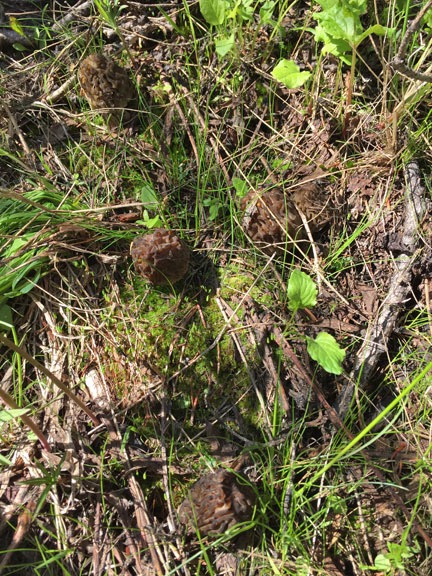

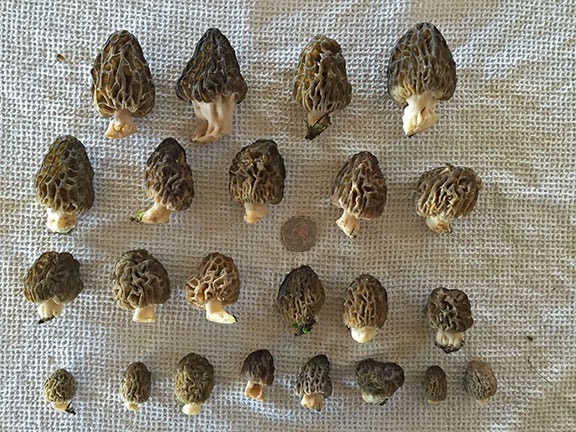

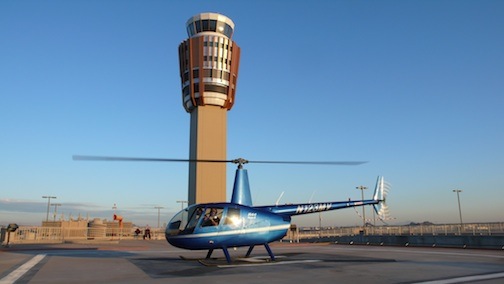
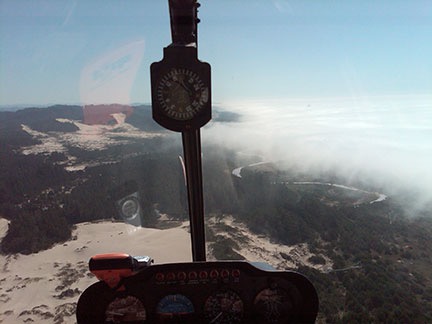
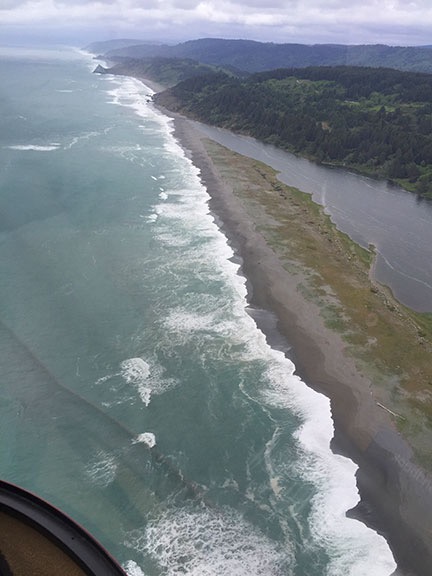
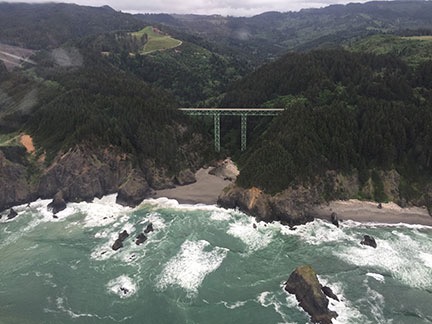
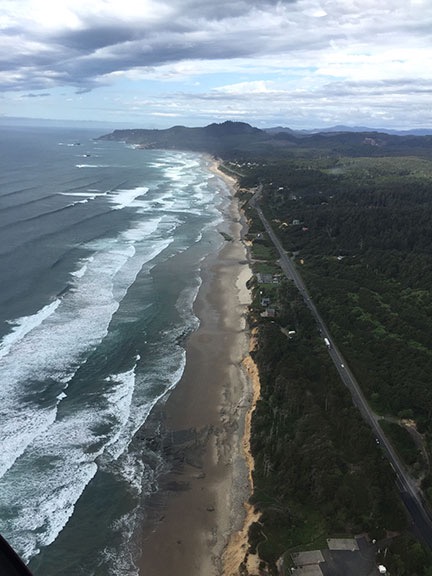

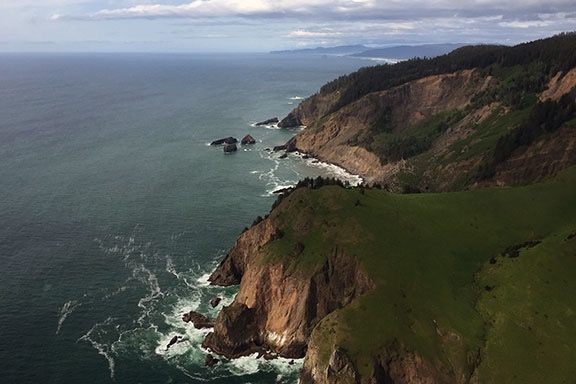
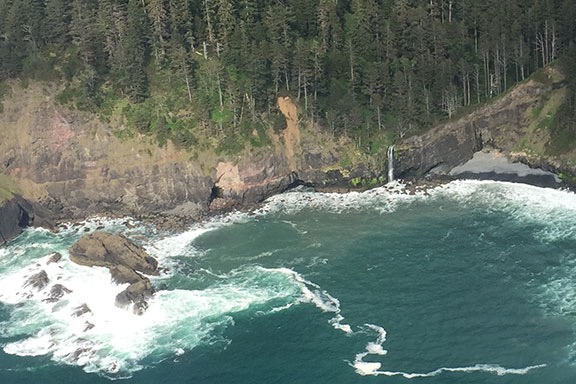
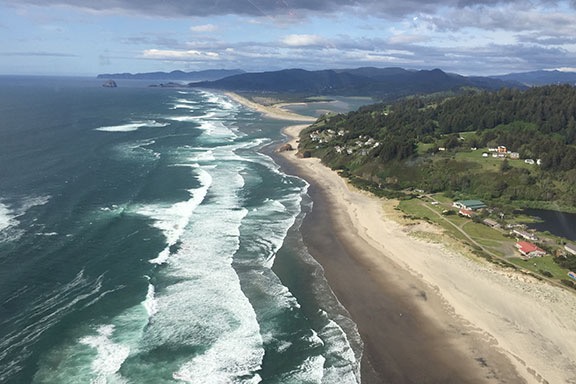
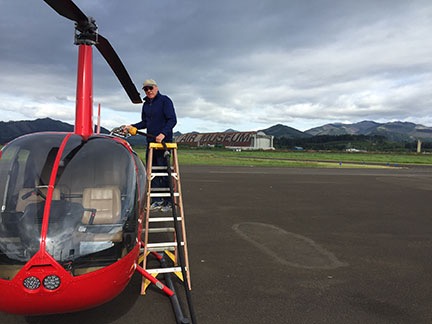
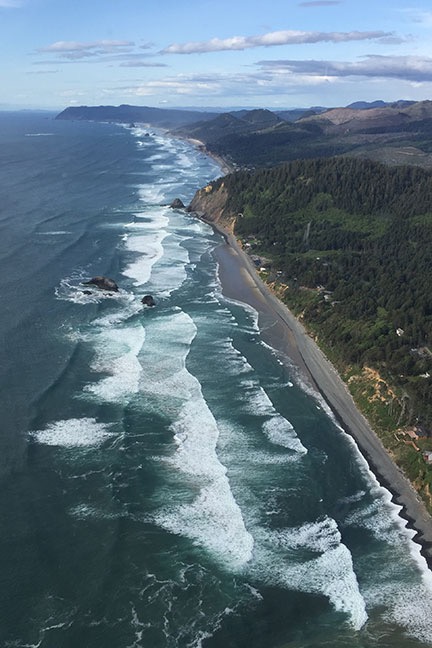
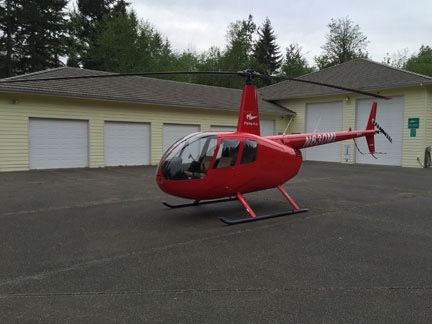

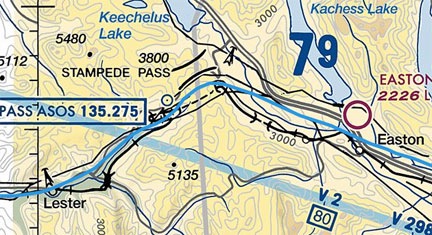



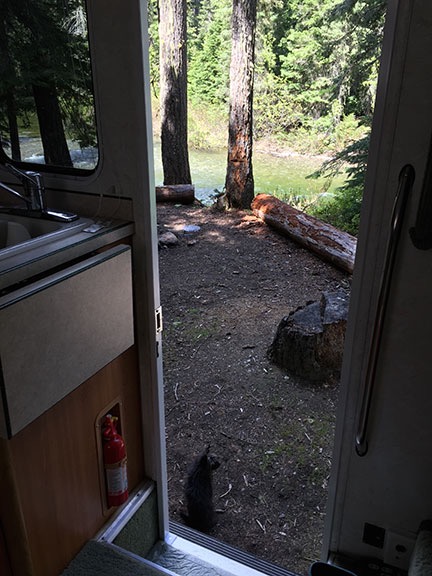
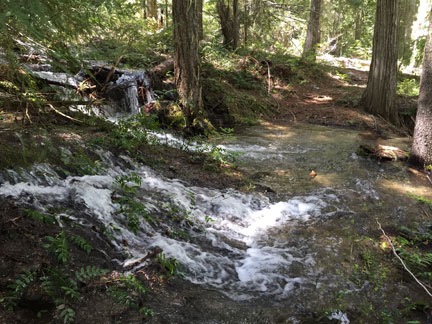
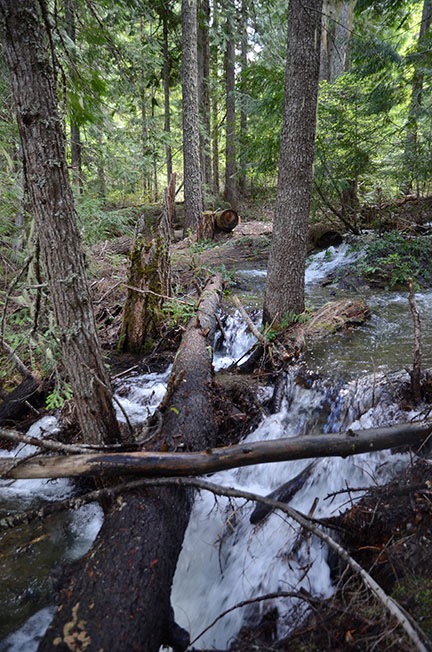






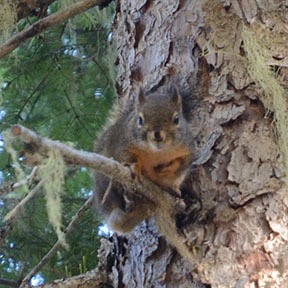
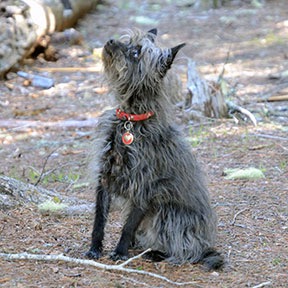

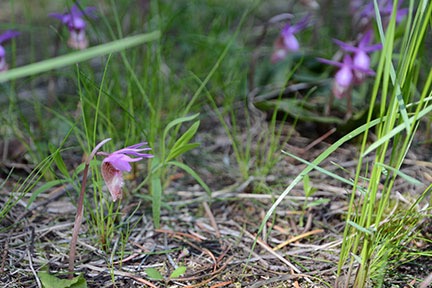 A patch of fairy slipper.
A patch of fairy slipper.